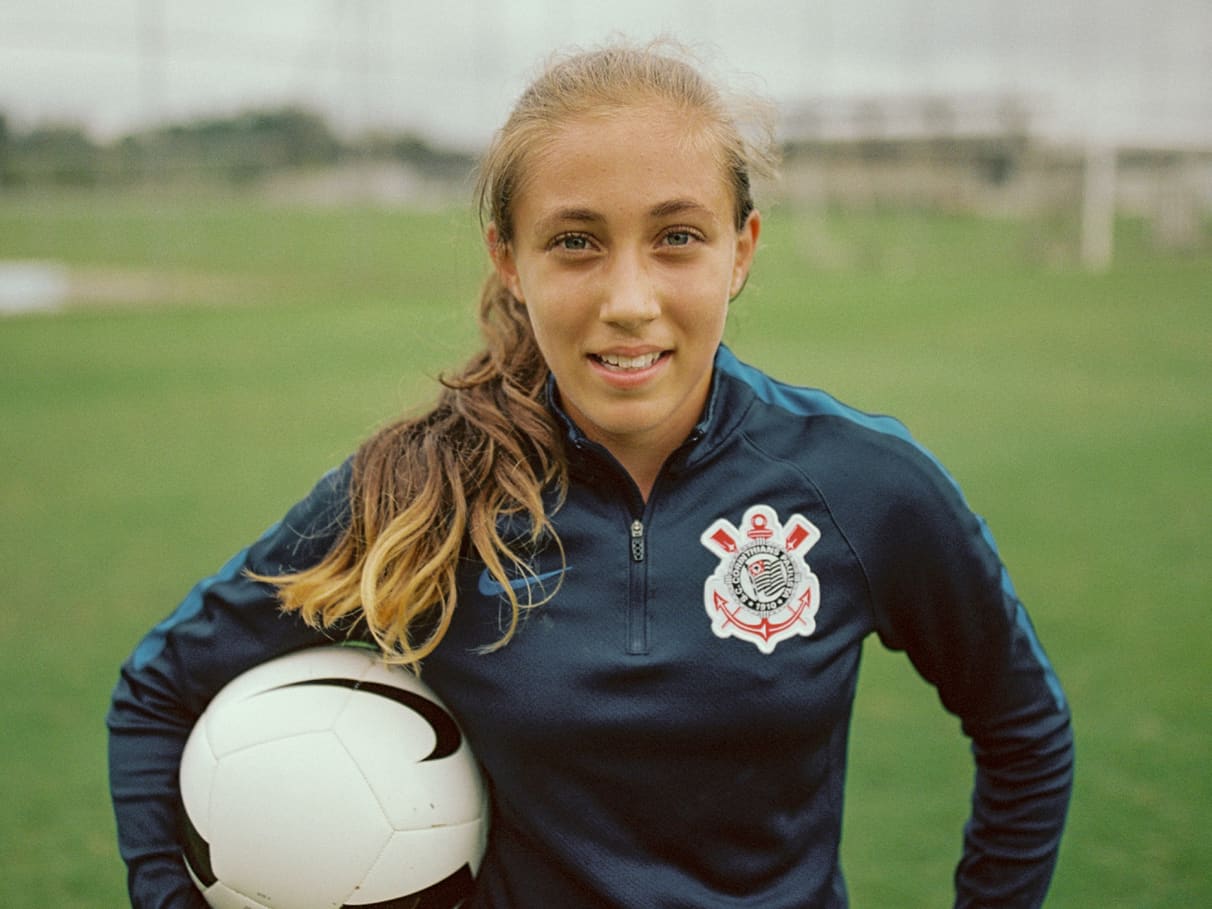This is a modal window.
Ripple Effect
Sofia is only 14 years old, but already she feels a change happening in women’s soccer.
Sitting in a locker room with her teammates at their soccer club in São Paulo, Brazil, she spoke about last summer’s tournament, which was broadcast on national television in her country for the first time ever.
“Man, I don’t even know what to say, it was an extraordinary thing,” begins Sofia. “Some people didn’t even know what [women’s soccer] was. ‘Women play soccer? No way.’ And then everyone started learning more about it.”

An Increase in Visibility
Their experience hasn’t been easy, but last summer’s tournament in France ignited a change. For them and many others, it was a turning point, a moment that can—and in some ways already has—had a ripple effect on the growth of women’s soccer. A record number of people, more than 1 billion, across the world tuned into the matches. And the momentum is continuing.
In the months following the tournament, average attendance has risen in women’s professional leagues, and a handful of matches have set attendance records for women’s international and club soccer. One of those matches took place in São Paulo on November 16, when Corinthians hosted 28,862 spectators in the men’s stadium, another first for women’s soccer. And sitting right there in the stands were Sofia, Gabi, and Nicoly, seeing a turnout normally reserved for men’s matches.

28,862
CORINTHIANS
VS.
SÃO PAULO
November 16
Arena Corinthians, São Paulo
25,218
August 11
Portland Thorns vs. North Carolina Courage
Providence Park, Portland
49,504
August 29
USA vs. Portugal
Lincoln Financial Field, Philadelphia
77,768
November 9
England vs. Germany
Wembley, London
20,029
November 9
Australia vs. Chile
Bankwest Stadium, Sydney
30,661
November 9
Lyon vs. Paris Saint-Germain
Groupama Stadium, Lyon
38,262
November 17
Tottenham vs. Arsenal
Tottenham Hotspur Stadium, London

So, what does all this mean for Sofia and her teammates? Acceptance, for starters.
“It made people watch and think, ‘Wow, women also can play soccer on the same level as men,’” says Nicoly, 12, a goalkeeper at Pelado Real.
Of course, there are many other issues, including access and funding, that need to be addressed in order to grow the game. But visibility is a tool with powerful reach that has already started to change the perspective on women’s soccer.
A Change that Starts at Home
Sofia and her teammates, Gabi and Nicoly are very aware of the challenges girls who want to play and watch soccer face. They’ve experienced it firsthand, whether showing up to a park and seeing only men and boys on the pitches or getting strange looks and questions like, “Are you a boy?” Eventually, the girls joined Pelado Real Soccer Club, the only private all-girls club in São Paulo.
In Brazil, parents’ minds need the most changing, says Júlia Vergueiro, the founder of Pelado Real. Families can often be the biggest hurdle to getting daughters into the sport. There’s a longstanding culture of boys being given soccers while girls are given dolls. By simply broadcasting women’s soccer, she says, the mindset is shifting.
“Before, if parents thought only their daughters wanted to play soccer, they didn't want to share that with anyone,” says Júlia.” Now they go to work and people are saying, ‘Did you see Andressa’s goal? Did you see that move?’ And they can say, ‘Wow, my daughter also plays soccer, and she wants to be just like her!’ So that becomes something they’re proud of.”

Nicoly, Sofia, Gabi and Julia
Júlia started Pelado Real in 2011 while working in banking. In 2013, she made the club her full-time job (despite her worried parents, who couldn’t see working in women’s soccer as lucrative or stable). Seeing professional women’s soccer on TV means Júlia’s current players can dream about playing for Brazil or big international clubs. And even more girls are sharing that dream now, too. Júlia says that in the months since last summer’s tournament, enrollments in the club have doubled. Soon, Pelado Real will expand to other locations in São Paulo.
“For me, a very obvious way to see this is comparing who I used to see as soccer idols when I was young,” says Júlia. “If someone asked back then, ‘Who is your inspiration to play soccer?’ I would for sure only mention male players. If you ask one of my girls at Pelado Real today, they will say, ‘Andressa Alves or Adriana.’”

Andressa Alves

Adriana Leal da Silva
The Future of Soccer
Players such as Andressa and Adriana know the struggle and are embracing their roles to help inspire change. Change, they echo, has been happening in Brazil and other countries since last summer. Both players share double duty on the Brazilian National team as well as their respective clubs, AS Roma (in only its second season with a women’s side) and Corinthians.
“I think through my story, girls in Brazil can believe in a dream of playing in Europe,” says Andressa, who was also the first Brazilian woman to play for FC Barcelona. “My main goal is to leave a legacy in every club I become a part of so I can keep the doors open for other girls.”

So how does the momentum, the ripple effect, continue? Be a part of supporting and watching the women’s game, says Andressa.
“Of course, women’s soccer is very different than men’s, but it’s no less pretty or less interesting,” she says. “Many people, especially in Brazil, know nothing about women’s soccer, and they only judge. Stop criticizing so much and start watching.”
Gabi, Nicoly, and Sofia are ready to take up the mantle.
“People saw the professional women playing, and they will see us, young, playing,” says Nicoly. “They’ll see that women’s soccer can have a huge future.”
Adds Sofia, “And we are the future. We are there fighting.”

